Planting Site Basics
Planting Site: Abra Malaga
Country: Peru
Forest Type: Moist Subtropical
Site Status: Active
Planting partner: ECOAN and Global Forest Generation
Where Are We Planting?
Peru is a country with diverse landscapes. It’s home to Andean glaciers, tropical beaches, arid deserts, Amazonian rainforests and mountainous scrublands. Our planting site in Peru is located in the high Andes near Cusco and is home to a remarkably unique forest.
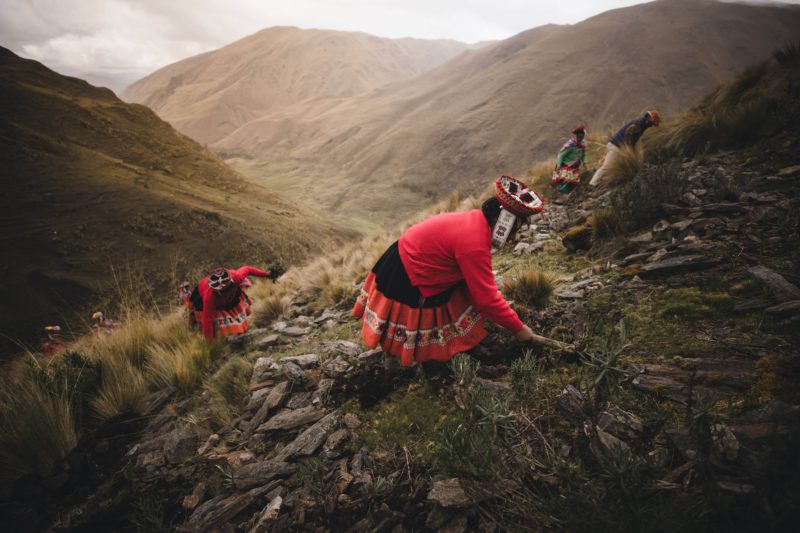
What Trees Are We Planting?
At our Peru planting site, we plant polylepis trees on the hillsides of the Andes near Cusco. Polylepis trees are a unique tree species that can grow at some of the highest elevations on the planet, far above normal tree line (at 5000m/12k-15k ft). They’ve adapted to the harsh growing conditions and look more like shrubs growing to a maximum height of 3m, or even shorter at higher altitudes.

Historically, Polylepis trees occupied a very long strip of these mountains between snowy peaks and wetlands. The overexploitation of their timber and the expansion of pastures for livestock has drastically reduced their coverage in recent centuries. The remaining patches of polylepis forests are severely fragmented.
Who’s Planting With Us?
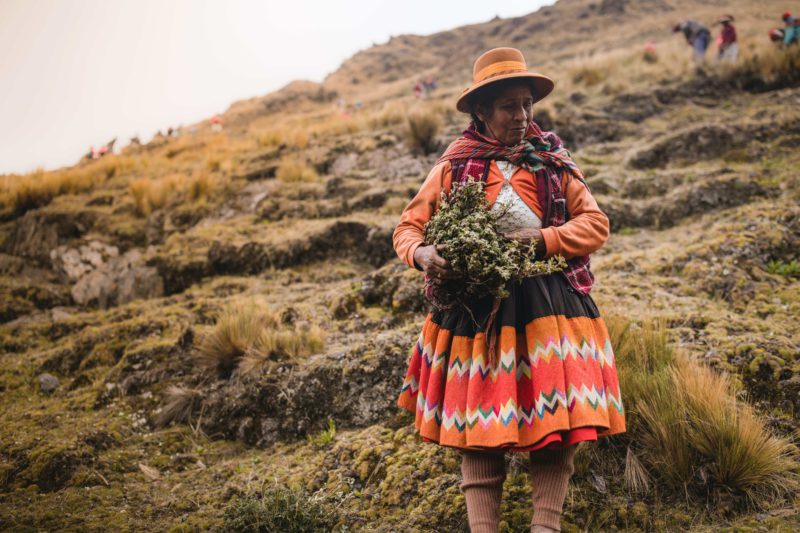
We’ve partnered with ECOAN and Global Forest Generation to support Accion Andina, the first multi-country, large-scale, grassroots initiative to restore the high altitude native forests of South America’s high Andes.
Accion Andina is adamant that long lasting ties to indigenous communities in the Andes are essential for effective large-scale ecosystem restoration. Protecting and supporting the indigenous communities who’ve lived in the Andes for centuries alongside fighting climate change is critical.
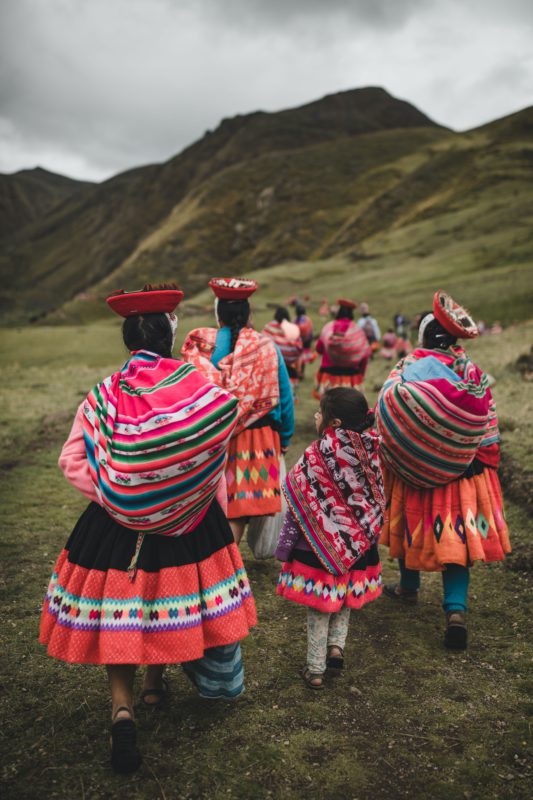
The Indigenous people of the high Andes consider the prime benefit of restored native forest to be restoration of their watersheds. As they watch the glaciers disappear, they’re acutely aware of climate change. They know that without actively regenerating watersheds, they won’t have sufficient water in coming decades.
Queuña Raymi is the festival of the polylepis. Communities gather, play music, perform ceremonial planting dances, walk together up to a planting site and collectively plant tens of thousands of trees in a single day.
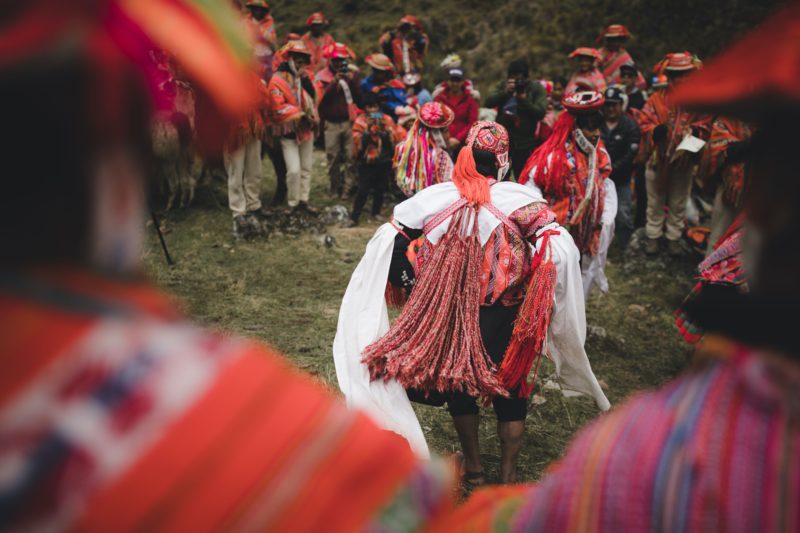
Throughout the year leading up to the festival, local and indigenous communities run nurseries programs, collecting seeds from nearby polylepis forests to grow seedlings for planting.
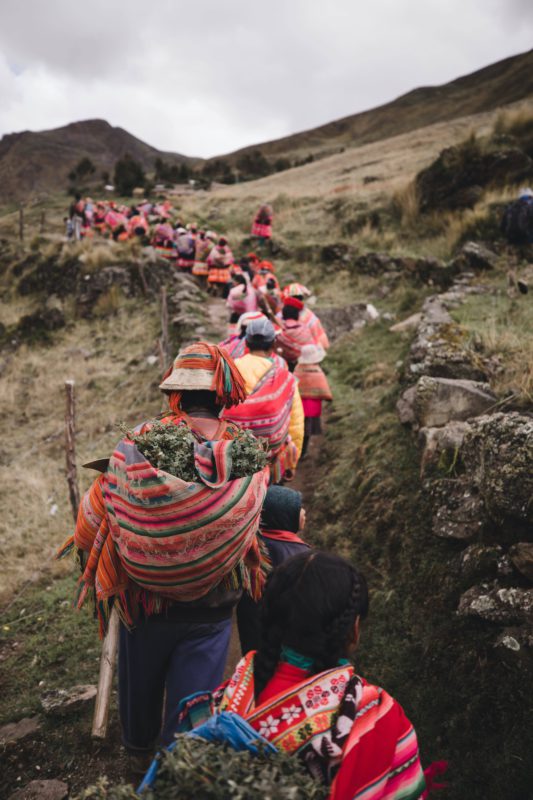
Why Plant Polylepis Forests In Peru?
The polylepis forests in Peru are located just below the Andean glaciers and at the top of the watersheds that feed into the Amazon basin. These trees play a critical role in regulating the water cycle and protecting the Andean watersheds.
Polylepis trees have adapted to gather mist and precipitation through their branches from clouds and their root systems are like sponges, storing large amounts of water. They host colonies of epiphytic plants and mosses on their trunks and branches, which also store water. All of this prevents the water from flowing downhill.

As deforestation of these forests has occurred, the land has lost the ability to regulate its natural water cycle. Climate change is melting glaciers and has brought longer dry seasons, bringing on droughts, fires and floods.
With the hillsides bare, water runoff during wet seasons has nowhere to be stored, eroding fertile topsoils, and flooding areas downstream in the Amazon. Once the dry season comes, none of the water has been stored, so there’s nothing left to replenish aquifers to prevent droughts.
This cycle creates more extreme wet and dry conditions in the entire watershed — drastic floods and extreme rain in the summer (rainy season) and extremely dry rivers in the winter (dry season). Because of this, when the fires burn each year in the Amazon forests, they burn bigger and hotter. The smoke rises, which causes the glaciers to melt even faster. This creates a large-scale feedback loop that continues to degrade both the Andean and Amazonian ecosystems.
By planting a “green strip” of polylepis forests beneath the melting glaciers, runoff can be captured and stored naturally, then slowly released into watersheds below. This will help to stabilize water supply for the entire watershed, starting with the Andean glaciers down to the Amazon rainforests, even during the dry season.
What’s The Impact?
Environmental:
- Protect and restore watersheds and water resources for water security.
- Provide stability to the land and protect against erosion to restore soils.
- Protect biodiversity by restoring and expanding vital animal habitat for endemic and endangered species in both the Andes and downstream in the Amazon.
- Sequester carbon to help combat climate change.
Social:
- Empower Indigenous communities to protect their lands and futures.
- Provide services to improve quality of life, including periodic doctor and dentist visits and access to medicine, and access to technologies like solar panels — which bring electricity to villages — and clean-burning clay stoves. Frequent exposure to smoky, open fires causes cataracts and is the leading cause of blindness in developing countries.
- Secure land rights and titles for communities. Conservation partners enable communities to secure title to their lands, which provides legal protection from exploitation by timber, mining, oil companies, etc.
- Support developing micro-business like eco-tourism and nursery raised foods.
- Provide support for grassroots reforestation efforts in small communities
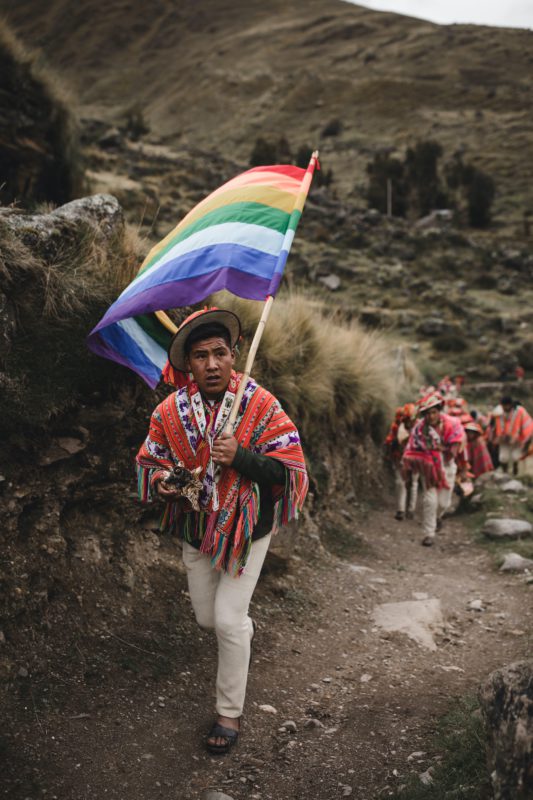
Related UN Sustainable Development Goals (SDGs)
The UN’s Sustainable Development Goals (SDGs) are a collection of 17 interlinked global goals that are a “blueprint to achieve a better and more sustainable future for all.”
Here are the SDGs that we’re addressing in our Peru site:
#1 No Poverty: End poverty in all its forms everywhere.
#2 Zero Hunger: End hunger, achieve food security and improved nutrition, and promote sustainable agriculture.
#3 Good Health and Well-being: Ensure healthy lives and promote well-being for all at all ages.
#4 Quality Education: Ensure inclusive and equitable quality education and promote lifelong learning opportunities for all.
#5 Gender Equality: Achieve gender equality and empower all women and girls.
#6 Clean Water and Sanitation: Ensure availability and sustainable management of water and sanitation for all.
#8 Decent Work and Economic Growth: Promote sustained, inclusive and sustainable economic growth, full and productive employment and decent work for all.
#10 Reduced Inequalities: Reduce inequality within and among countries.
# 13 Climate Action: Take urgent action to combat climate change and its impacts by regulating emissions and promoting developments in renewable energy.
#15 Life on land: Protect, restore and promote sustainable use of terrestrial ecosystems, sustainably manage forests, combat desertification, and halt and reverse land degradation and halt biodiversity loss.
Why The Llama For This Collection?
Cuteness aside, llamas play a huge role in our Peru planting site. Once a year during a single-day planting ceremony local communities load up people and llamas with seedlings to be planted high in the Andes mountains. This collection celebrates the llamas and how they’ve helped Peruvian communities reforest the Andes.

Looking to help us plant in Peru? Shop our Peru Collection.
Want to see where your trees are planted? Register your trees now.

